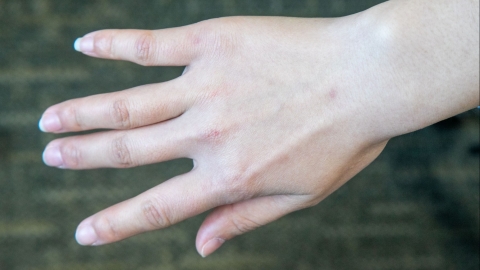Is having hot palms and soles a sign of fever?
Generally speaking, warm palms and soles are not directly equivalent to fever. Whether or not a fever is present should be determined based on actual body temperature readings. If discomfort occurs, it is recommended to seek timely medical consultation and treatment at a正规 hospital. Detailed explanations are as follows:

If the palms and soles feel warm, but thermometer readings of axillary, oral, or rectal temperature fall within the normal range, and there are no other symptoms of discomfort, this situation is not equivalent to fever. It may be caused by factors such as high ambient temperature, excessive clothing, or emotional stress, which lead to increased local blood circulation. This is considered a physiological temperature perception abnormality rather than true fever.
If the palms and soles are warm and thermometer readings show body temperature above the normal range, accompanied by symptoms such as headache, fatigue, and muscle pain, this indicates fever. In this case, the warmth in the palms and soles represents a localized manifestation of general body fever, often caused by pathological factors such as infection or inflammation. The severity and cause of the fever should be assessed by combining temperature readings with other symptoms.
When experiencing warm palms and soles, one should first use a thermometer to check body temperature and determine if there is a fever. If the temperature is normal, attention should be given to adjusting the ambient temperature, wearing loose and breathable clothing, maintaining emotional stability, and observing whether symptoms improve. If the temperature is elevated and accompanied by discomfort, adequate rest and hydration are recommended. Physical cooling methods or fever-reducing medication, as directed by a physician, may be used when appropriate. If symptoms persist or worsen, prompt medical attention is advised to identify the underlying cause of the fever and initiate targeted treatment.










